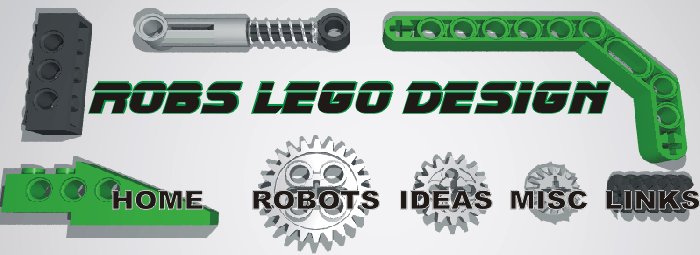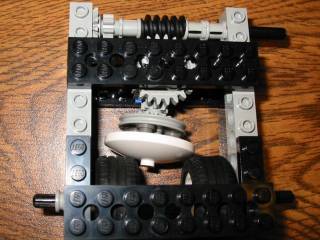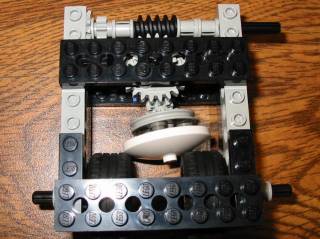

CVT stands for continuously variable transmission. This type of transmission allows for a change in ratios without stopping or disengaging the gears. Most CVT's are friction drive, with some means of varying the relative diameters of the driving components while driving. These friction drive transmissions are simple, but can only transmit a limited amount of torque before the wheels start slipping. There are some CVT's that use gears and cranks that offer positive drive without a chance for slippage, but these are much more complicated. My Lego CVT is a friction drive assembly, and it is really just a quick concept that wouldn't be very practical in real applications.
These pictures show the full range of the white disk. One of the wheels is the input, and the other is the output. The speed of the output can vary from much slower than the input speed to much faster. Sounds real technical doesn't it? I didn't bother calculating the exact ratios.


The only trick was finding the approximate center of curvature of the white disk. This is so it can remain in contact with the two wheels as it is rotated to vary the speed.
This CVT could be drastically improved by adding another disk on the other side of the wheels to increase the friction between the disk and the wheels. A somewhat similar CVT with rotating disks was used in an old Buick car in the 1930's. It was discontinued because it broke down a lot, and it was much heavier than a regular transmission. Continuously variable transmissions are devices that have intrigued me for a long time. I think I first heard about them in a Popular Science magazine. They had an article on a fully geared CVT. I plan on building a Lego model of something similar to this. Like I said earlier, geared or ratcheting CVT's are much more complicated. Maybe that's why I like them :)